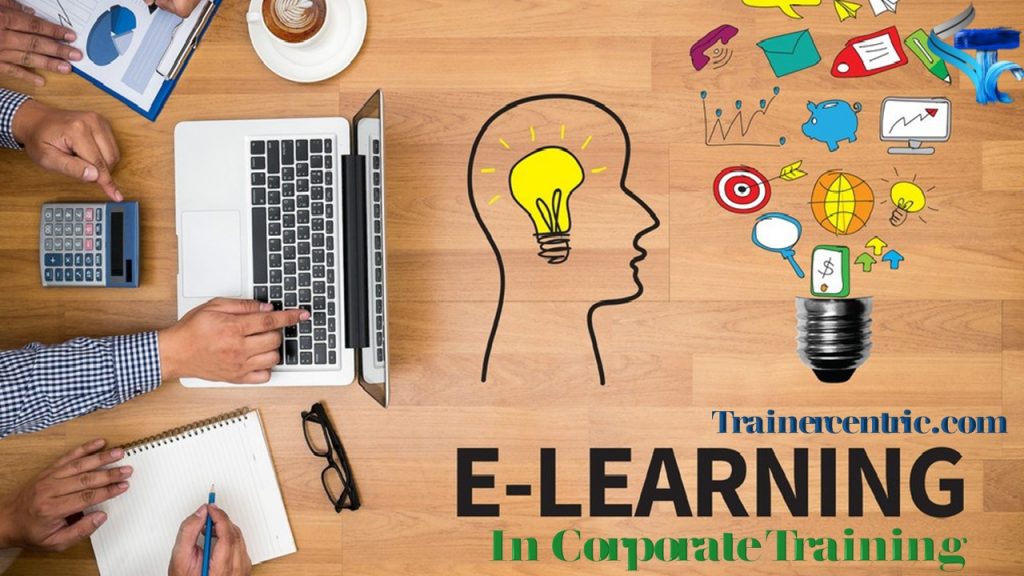
In today’s fast-paced business landscape, staying competitive means constantly adapting and upgrading skills. Corporate training has evolved beyond traditional classroom setups, thanks to the power of e-learning in corporate training.
With the integration of technology, companies are leveraging the benefits of online learning to enhance employee development, foster growth, and achieve organisational goals.
So, what is e-Learning in Corporate Training?
E-learning, short for electronic learning, is a method of education that utilises digital technology to deliver learning content and training materials to individuals through electronic devices such as computers, tablets, and smartphones.
It encompasses a wide range of online resources, including interactive modules, videos, quizzes, simulations, and virtual classrooms, designed to facilitate learning outside of traditional classroom settings. E-learning provides learners with the flexibility to access educational materials at their own pace and convenience, breaking down geographical barriers and enabling remote learning.
It has become increasingly popular in both academic and corporate settings as a way to acquire new skills, knowledge, and competencies through digital platforms.
The Rise of E-Learning in Corporate Training
In the ever-evolving landscape of corporate training, e-learning stands as a testament to the transformative power of technology. The journey of e-learning in corporate training has been a remarkable one, marked by innovation, adaptability, and a profound impact on workforce development.
Emergence of E-Learning in Corporate Training
The roots of e-learning in corporate training can be traced back to the mid-20th century when the concept of computer-based training (CBT) first emerged. Early pioneers like Donald L. Bitzer and Robert Taylor introduced PLATO (Programmed Logic for Automated Teaching Operations) at the University of Illinois in the 1960s. PLATO was a computer-assisted instruction system that laid the foundation for interactive and remotely accessible learning.
Corporate Training Meets e-Learning
As computers became more accessible and user-friendly in the 1980s, organizations began to explore their potential for training purposes. IBM played a significant role in introducing computer-based training to corporate settings. Their Coursewriter software enabled companies to develop their own training programs on computers.
However, it was the 1990s that witnessed a more significant leap in e-learning. The rise of the internet and advancements in digital technology led to the birth of online learning, a precursor to modern e-learning. Companies started using intranets and early Learning Management Systems (LMS) to deliver training content to their employees.
The 21st century marked a turning point for e-learning in corporate training. The rapid proliferation of the internet, coupled with advancements in multimedia and interactivity, brought e-learning to the forefront of organisational learning strategies. E-learning evolved from basic text-based modules to engaging multimedia experiences that included videos, animations, and simulations.
In 2002, Elliott Masie coined the term “e-learning” to describe the use of electronic technology to deliver learning content and training programs. This terminology solidified the concept and its significance in the training landscape.
Key Contributors of e-learning Industry
- Elliott Masie: As a futurist and learning expert, Masie’s work has focused on the integration of technology in learning. His contributions include establishing the Masie Center, a think tank focused on learning and technology.
- Michael Allen: Known for his contributions to instructional design, Allen advocated for meaningful and interactive e-learning experiences. He introduced the concept of “e-learning 2.0,” emphasising the importance of engagement and interactivity.
- Stephen Downes and George Siemens: These educators introduced the theory of connectivism, which emphasises the role of networks and connections in learning. Their work influenced the design of collaborative and social e-learning platforms.
Benefits of E-Learning in Corporate Training
In a corporate landscape characterised by constant change and evolution, employee training must also keep up with the times. E-learning in corporate training has emerged as a transformative solution, catering to the diverse needs of companies across industries. This article explores the multiple advantages of incorporating e-learning in corporate training strategies, emphasising its impact on flexibility, cost-effectiveness, personification, and more.
Flexibility and Convenience
E-learning in corporate training brings unparalleled flexibility to corporate training. Employees can access training materials and modules at their own convenience, eliminating the constraints of rigid schedules. This convenience proves especially beneficial for organisations with geographically dispersed teams or remote workers. Learning can occur when it best suits the individual, promoting a healthy work-life balance and reducing the pressure associated with strict training timelines.
Cost-Effectiveness
Traditional training methods often incur high costs related to travel, accommodation, and physical training materials. E-learning in corporate training significantly cuts down these expenses. With a one-time investment in creating the training content, businesses can reach a global audience without worrying about additional costs per participant. This cost-effectiveness makes e-learning in corporate training an attractive option, particularly for small and medium-sized enterprises looking to maximise their training budgets.
Access to a Wealth of Resources
E-learning in corporate training opens the doors to a vast repository of resources. Through multimedia elements such as videos, info graphics, and interactive quizzes, learners engage with the content more effectively. Furthermore, online platforms can seamlessly integrate external resources, industry insights, and expert opinions, enriching the learning experience beyond what traditional methods could offer.
Personalised Learning Paths
Every employee has a unique learning pace and preferred method of acquiring knowledge. E-learning platforms allow for personalised learning paths tailored to individual needs. Adaptive assessments and AI-driven recommendations ensure that employees receive the right content at the right time. This not only enhances the learning experience but also improves knowledge retention and application.
Real-Time Progress Tracking
Unlike traditional methods where tracking progress can be cumbersome, e-learning platforms offer real-time tracking of learner progress. Employers and employees can monitor completion rates, quiz scores, and time spent on each module. This data-driven approach enables timely interventions, ensuring that struggling employees receive the support they need, and high-performers can be challenged accordingly.
Consistent and Standardised Training
Maintaining consistency in training content and delivery can be challenging, especially in large organisations. E-learning in corporate training addresses this concern by providing standardised training modules. Every employee receives the same quality of instruction, eliminating discrepancies that may arise in traditional classroom settings. This uniformity contributes to a more cohesive company culture and a higher level of competence across the workforce.
Global Reach and Collaboration
The digital nature of e-learning in corporate training transcends geographical boundaries. Companies with offices in multiple locations can provide uniform training experiences to all employees, regardless of their location. This global reach fosters collaboration among diverse teams, sharing insights and perspectives from different corners of the world. It enhances cross-cultural understanding and teamwork, critical skills in today’s interconnected business environment.
Employee Engagement and Motivation
Engagement is key to effective learning, and e-learning in corporate training, excels in capturing learners‘ attention. Interactive elements, gamified challenges, and social learning features make the training experience engaging and enjoyable. The ability to earn badges, rewards, or certificates upon completion adds an element of achievement that motivates employees to actively participate and excel in their learning journey.
Eco-Friendly Approach
As sustainability becomes a priority for businesses, e-learning in corporate training offers an environmentally friendly training solution. The reduction of paper-based resources, the elimination of travel-related emissions, and the efficient use of digital resources contribute to a greener approach to corporate training. Companies can proudly incorporate e-learning into their sustainability initiatives.
Overcoming Learning Barriers
In traditional settings, some employees might feel hesitant to ask questions or voice concerns. E-learning in corporate training provides a comfortable space for learners to interact, seek clarification, and discuss topics without the fear of judgment. This fosters a more inclusive learning environment, where even introverted employees can actively participate and benefit from the training.
Adapting to Different Learning Styles
People have diverse learning styles, and e-learning in corporate training can cater to all of them. Visual learners benefit from videos and infographics, while auditory learners can engage with podcasts and audio-based content. Interactive simulations suit kinesthetic learners. E-learning’s versatility ensures that everyone receives content in a way that resonates with their preferred learning style.
Security and Data Privacy
With the digital transmission of sensitive information, security is a top concern. Reputable e-learning platforms prioritise data encryption and compliance with privacy regulations. Companies can trust that their proprietary information and employee data are secure, allowing them to focus on training without worrying about potential breaches.
Measurable ROI and Performance Improvement
E-learning in corporate training has an impact that can be quantified through data analytics. Companies can measure the return on investment (ROI) of their training initiatives by analysing improved performance metrics, reduced error rates, and enhanced employee satisfaction. This data-driven approach empowers businesses to refine their training strategies continuously and achieve better outcomes.
E-Learning in Corporate Training : Tools and Platforms
In the digital age, E-Learning in corporate training has emerged as a transformative force, breaking down barriers to education and empowering learners of all backgrounds. Here, we’ll take a closer look at several prominent E-Learning tools and platforms that have redefined the way we learn.
Coursera
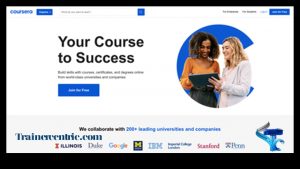
Coursera has established itself as a global leader in E-Learning by partnering with esteemed universities and institutions. It offers a vast array of courses that cover an extensive spectrum of subjects. Learners can choose from individual courses or opt for specializations that provide a structured learning journey.
One of Coursera’s standout features is its access to content from renowned educators and institutions, offering learners the opportunity to learn from the best. The platform’s certification options provide tangible proof of skill acquisition, making it appealing to both career-driven individuals and lifelong learners.
edX

edX embodies the collaboration between academia and technology to deliver high-quality education to a global audience. Founded by Harvard University and MIT, edX offers courses that are designed to be both rigorous and engaging. Learners can explore a variety of subjects and gain valuable insights from top educators.
The platform’s emphasis on verified certificates adds credibility to the learning experience. edX’s MicroMasters and Professional Certificate programs offer learners a chance to earn credentials that hold significance in various industries, enhancing their professional prospects.
Khan Academy
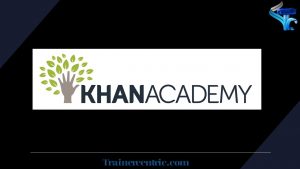
Khan Academy disrupts the traditional education model by providing a wealth of educational resources entirely for free. Catering to learners of all ages, Khan Academy’s strength lies in its simplicity and accessibility. It offers video lessons, practice exercises, and tools that enable learners to grasp complex concepts at their own pace.
With its focus on K-12 education and beyond, Khan Academy provides a seamless learning transition for students of all ages. The platform’s adaptive learning technology tailors content to individual progress, ensuring a personalized learning journey.
Udemy

Udemy introduces a dynamic twist to E-Learning by enabling experts and professionals to share their knowledge directly with learners. This model has resulted in a diverse range of courses, spanning fields from technology and business to personal development and creative arts.
Udemy’s strength lies in its flexibility. Learners can access courses on-demand, allowing them to fit learning into their busy schedules. The platform’s vast selection ensures that learners can find courses that cater to their unique interests and professional aspirations.
Skillshare

Skillshare caters to the creatively inclined, emphasising hands-on learning in creative disciplines. Through project-based classes, learners can hone skills in graphic design, illustration, photography, and more. Skillshare fosters a sense of community by encouraging interaction between learners and instructors.
Skillshare stands out as a hub for creative minds seeking to acquire practical skills in various domains. Its project-based approach encourages hands-on learning, empowering learners to develop their creative talents and apply newfound skills in real-world scenarios.
Skillshare’s unique model fosters a sense of community among learners and instructors. This interactive aspect promotes collaboration, feedback, and networking, enhancing the overall learning experience.
LinkedIn Learning

LinkedIn Learning, formerly known as Lynda.com, aligns E-Learning with professional growth. With a focus on business, technology, and creative skills, the platform offers courses that help individuals stay relevant in a rapidly changing job market.
Integration with LinkedIn profiles allows learners to showcase their newly acquired skills to potential employers. LinkedIn Learning’s extensive library and industry-focused courses make it a valuable tool for career advancement.
FutureLearn

FutureLearn differentiates itself by fostering a sense of community and global engagement in the E-Learning experience. Partnering with universities and institutions worldwide, FutureLearn offers short courses, online degrees, and microcredentials in diverse subjects.
The platform’s social learning approach allows learners to engage in discussions, share insights, and collaborate with peers from around the world. This collaborative atmosphere enhances the depth and richness of the learning journey.
Duolingo

Duolingo has revolutionized language learning through its gamified approach. The platform transforms language acquisition into an enjoyable experience by integrating elements of competition and achievement.
Duolingo’s bite-sized lessons and interactive exercises make language learning accessible and engaging. The app’s user-friendly design appeals to beginners and those seeking to refresh their language skills.
Udacity
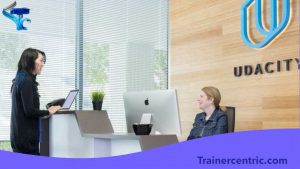
Udacity caters to the tech-savvy and career-oriented learners. Through its nanodegree programs, developed in collaboration with industry leaders, Udacity equips learners with practical skills in cutting-edge fields like artificial intelligence, data science, and programming.
Udacity’s focus on hands-on projects and real-world applications ensures that learners gain relevant skills that can be immediately applied in the job market.
Measuring the Effectiveness of E-Learning in Corporate Training
E-learning, characterized by its accessibility and flexibility, has revolutionised education by breaking down geographical barriers and enabling learners to engage with educational content at their own pace. However, the question of how to measure its effectiveness and what to measure remains a pertinent one.
Key Metrics for Measuring Effectiveness
Here are the key metrics that every e-learning content creator should be aware about.
Learner Engagement: Engagement is a cornerstone of effective learning. Tracking metrics like time spent on platforms, interactivity with content, and participation in discussions provides insights into the learner’s level of engagement.
Knowledge Retention:The goal of education is not just to consume information but to retain and apply it. Regular quizzes, assignments, and practical exercises can gauge how well learners retain the material.
Assessment Performance:Assessments help measure the mastery of concepts. Comparing pre and post-assessment scores reveals the efficacy of e-learning in enhancing a learner’s knowledge and skills.
Learning Progression:Tracking a learner’s progress through modules and levels showcases the journey from novice to expert. It reflects the effectiveness of the content’s delivery.
Challenges and Solutions of E-Learning in Corporate Training
E-learning in corporate training has disrupted traditional corporate training methods, offering flexibility, scalability, and cost-effectiveness. However, its integration is not without obstacles. This article explores the challenges and innovative solutions to ensure successful e-learning implementation in corporate training.
Challenges Faced in E-Learning Implementation
Adapting to Technological Shifts: Transitioning to e-learning demands technological adaptation. Employees may struggle with unfamiliar platforms and tools, hindering the learning process.
Overcoming Resistance to Change: Many employees are accustomed to traditional training methods. Shifting mindsets to embrace e-learning in corporate training requires a change management strategy that addresses apprehensions and highlights benefits.
Maintaining Engagement and Interaction: E-learning in corporate training can be isolating, lacking the interaction of in-person sessions. Engaging learners through interactive content, discussions, and virtual collaborations is essential.
Ensuring Content Relevance and Accuracy: Outdated or irrelevant content undermines the efficacy of e-learning in corporate training. Regularly updating and reviewing training materials is crucial to ensure accuracy and applicability.
Solutions to Overcome E-Learning Challenges
Comprehensive Technological Training: Providing thorough training on e-learning tools reduces the technological learning curve. This empowers employees to navigate platforms confidently.
Change Management and Communication: Clear communication about the shift to e-learning in corporate training, along with addressing concerns empathetically, can alleviate resistance and foster enthusiasm for the new learning approach.
Interactive Learning Platforms: Incorporating gamification, quizzes, and collaborative projects within the e-learning modules enhances engagement and replicates the interactive nature of traditional training.
Continuous Content Review Mechanisms: Establishing a system for consistent content review and updates guarantees that the training material remains relevant and aligned with the dynamic corporate environment.
20 Best Practices for Implementing e-learning in Corporate Training
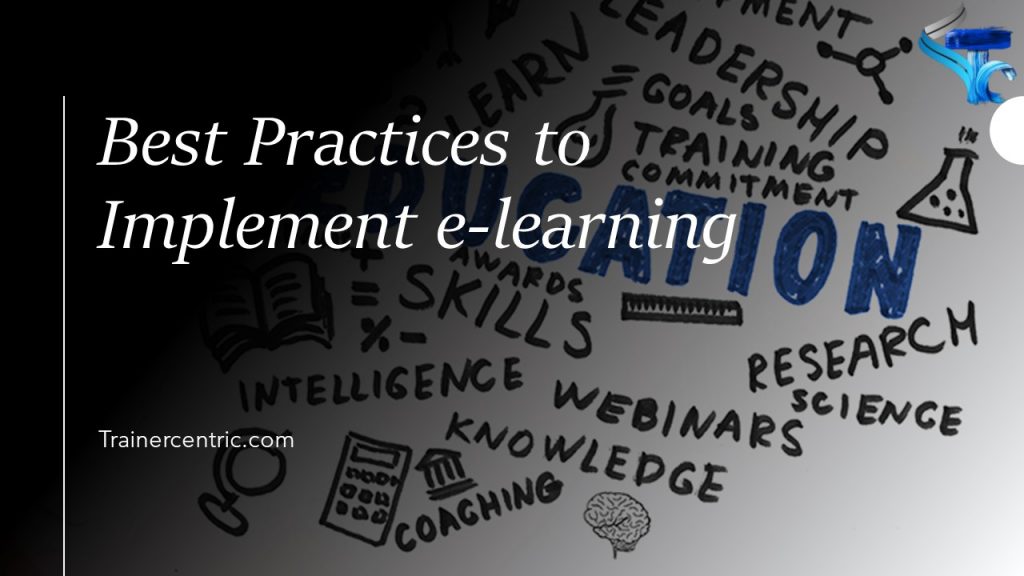
- Clear Learning Objectives: Clearly define the learning objectives for each course or module. Learners should understand what they will gain from the e-learning experience.
- User-Centered Design: Design the e-learning platform and content with the user in mind. Ensure the interface is intuitive, navigation is easy, and the content is engaging.
- Responsive Design: Ensure that the e-learning platform and content are accessible on various devices, including desktops, laptops, tablets, and smartphones.
- Engaging Content: Use a variety of multimedia elements like videos, interactive quizzes, simulations, and gamified elements to keep learners engaged and facilitate different learning styles.
- Structured Content: Organize the content into manageable modules or sections. Use headings, bullet points, and visuals to break up text-heavy content.
- Interactive Assessments: Incorporate regular assessments such as quizzes, assignments, and discussions to reinforce learning and provide learners with opportunities to apply their knowledge.
- Feedback Mechanism: Provide prompt and constructive feedback on assessments and assignments. This helps learners understand their progress and areas for improvement.
- Collaborative Learning: Foster a sense of community among learners by incorporating discussion forums, group projects, and collaborative activities.
- Flexibility: Allow learners to progress at their own pace. Provide options for reviewing material and accommodating different learning speeds.
- Clear Instructions: Provide clear instructions for every activity and assessment. Ambiguity can lead to confusion and frustration.
- Regular Updates: Keep the content up-to-date, especially if the subject matter evolves rapidly. Outdated information can undermine the credibility of the e-learning program.
- Technical Support: Offer technical support to learners who might encounter issues with accessing the platform, navigating, or submitting assignments.
- Accessibility: Ensure that the e-learning platform meets accessibility standards to accommodate learners with disabilities.
- Data Privacy: Implement strong data protection measures to safeguard learners’ personal information.
- Progress Tracking: Provide learners with tools to track their progress and completion status. This can motivate them to continue and complete the course.
- Instructor Presence: Maintain instructor presence through video introductions, announcements, and periodic live sessions. This personal touch helps learners connect with the instructor.
- Feedback Channels: Create avenues for learners to provide feedback on the course content, structure, and overall learning experience. This feedback can be invaluable for future improvements.
- Continuous Improvement: Regularly evaluate the effectiveness of the e-learning program through surveys, analytics, and performance metrics. Use this data to refine the content and approach.
- Onboarding: Provide a clear onboarding process for new learners, helping them navigate the platform and understand how the e-learning experience works.
- Promote Self-Directed Learning: Encourage learners to take ownership of their learning journey by setting goals, exploring additional resources, and pursuing topics of interest.
Remember that the best practices may vary based on the target audience, subject matter, and the specific goals of the e-learning initiative. Flexibility and adaptability are key as the e-learning landscape continues to evolve.
E-learning in corporate training has transformed corporate training from a rigid, location-dependent process into a flexible, accessible, and engaging experience. Embracing the power of e-learning in corporate training equips companies with the tools to foster continuous learning, enhance employee performance, and achieve lasting success.

![The Power of Storytelling in Corporate Training: Igniting Success and Inspiring Growth [2023]](https://trainercentric.com/wp-content/uploads/2023/06/storytelling-1024x576.jpg)

